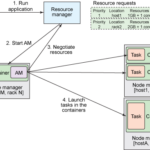
El primer paso es instalar los paquetes binarios de PostgreSQL:
1 2 3 4 5 6 7 8 9 10 11 12 13 14 15 16 17 |
# apt install postgresql Reading package lists... Done Building dependency tree Reading state information... Done The following packages were automatically installed and are no longer required: bigtop-groovy bigtop-jsvc bigtop-utils hadoop hadoop-hdfs libevent-core-2.1-7 libevent-pthreads -2.1-7 libopts25 libssl-dev sntp zookeeper Use 'apt autoremove' to remove them. The following additional packages will be installed: libllvm10 libpq5 postgresql-12 postgresql-client-12 postgresql-client-common postgresql-common ssl-cert sysstat Suggested packages: postgresql-doc postgresql-doc-12 libjson-perl openssl-blacklist isag The following NEW packages will be installed: libllvm10 libpq5 postgresql postgresql-12 postgresql-client-12 postgresql-client-common postgresql-common ssl-cert sysstat Ø upgraded, 9 newly installed, to remove and 60 not upgraded. Need to get 30.7 MB of archives. After this operation, 122 MB of additional disk space will be used. Do you want to continue? [Y/n] |
A continuación, configuramos las direcciones en la que escucha PostgreSQL. Hacemos que escuche en todas las direcciones del host:
|
|
# vim /etc/postgresql/12/main/postgresql.conf # grep listen_addresses /etc/postgresql/12/main/postgresql.conf listen_addresses = '*' # what IP address(es) to listen on; |
Ahora hemos de permitir los accesos de los nodos del clúster a este todas las BDs del servidor (nótese la línea referida al clúster… Continue reading →










